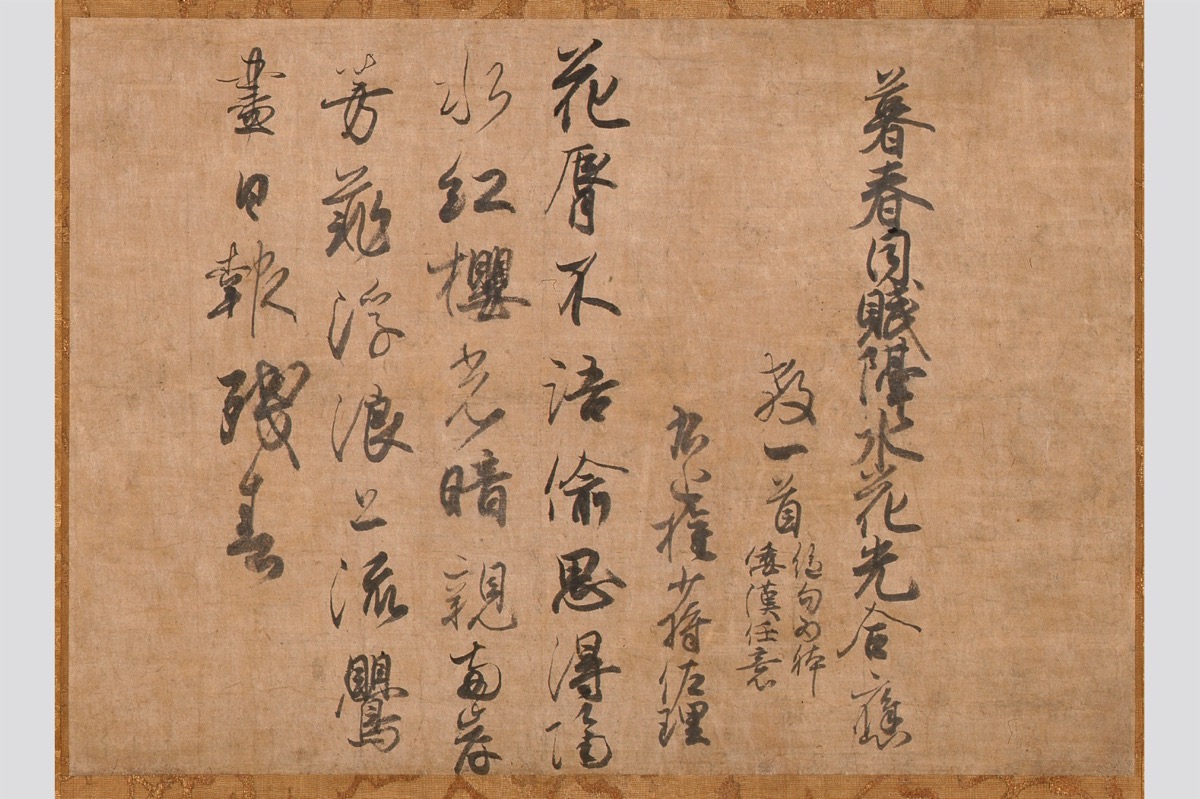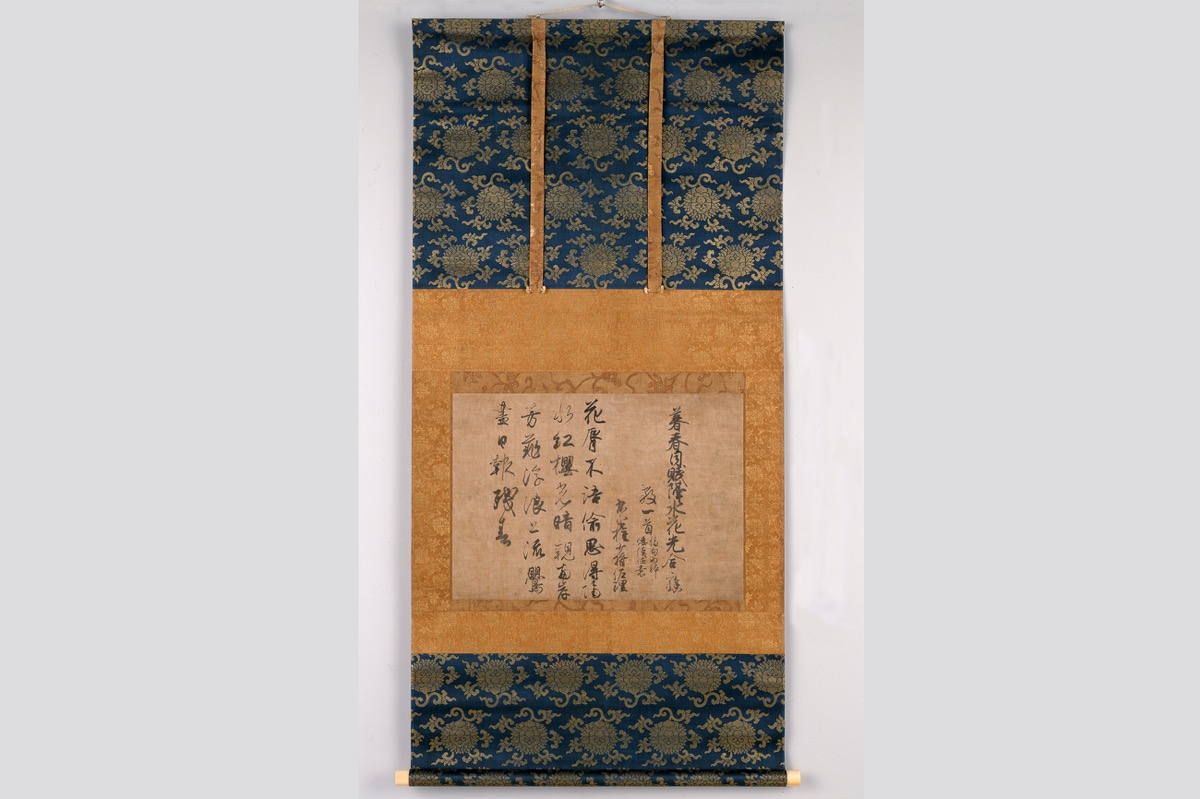Fujiwara no Sukemasa (Sari) Hitsu ShikaishiPoetry Paper (Shikaishi) Written by Fujiwara no Sukemasa
| District | Arts and Crafts | Period | ー |
|---|---|---|---|
| Set Content/Set Date | National Treasure(Writing)・西暦1952.11.22 | ||
| Owner | Kagawa Prefecture | Location | 5-5 Tamamocho, Takamatsu, Kagawa (The Kagawa Museum) |
Futokorogami is a kind of paper nobility would store inside their clothing. When this paper was used to compose Chinese (kanbun) poetry, it was called shikaishi (poetry paper).
Fujiwara no Sukemasa is a famous master of calligraphy from the Heian Period (794-1185). His grandfather Saneyori, Grand Minister of State, hosted a poetry contest at his residence in March of 969, where Sukemasa composed a Chinese poem and wrote it on this poetry paper. At the beginning are written the theme and rules of the poetry contest, as well as the poet’s profession and name. The poem is about a beautiful spring scene of cherry blossoms by the waterside. At the time, Sukemasa was just 26 years old, making this his oldest work, as well as the oldest poetry paper (shikaishi) still extant in Japan today. Written as a part of a poetry contest, there is a certain tension in the poem, but it is also a well-paced, elegant composition. The flowing brushwork of the characters for flower, light, water, and spring shows a shift from Tang-style to Japanese-style brushwork, making this an extremely valuable piece in the history of Japanese calligraphy.
This poetry paper is said to be one of the gifts bestowed by Tokugawa Mitsukuni of Mito (currently Ibaraki Prefecture) to Matsudaira Yorishige, his brother and lord of the Takamatsu Domain, in the 17th century during the Edo Period. Tokugawa Mitsukuni belonged to one of the three branches of the Tokugawa family, and was a grandson of Tokugawa Ieyasu.


